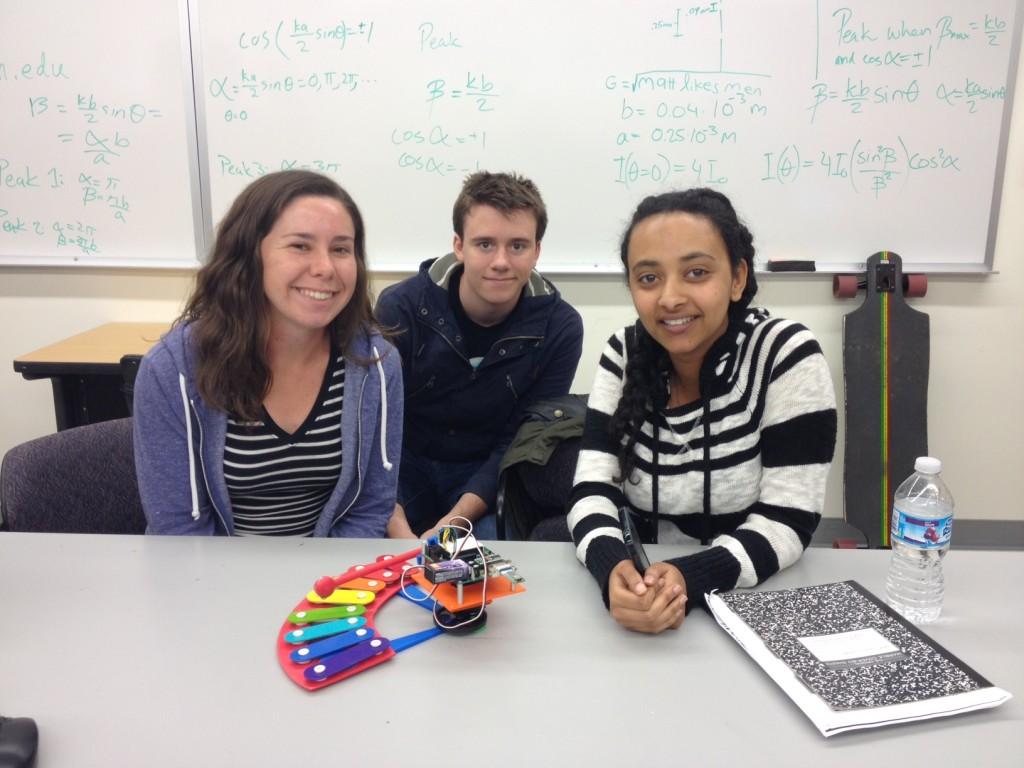Robert Kennedy is often associated with the saying, “Other people see things and say why? But I dream things that never were and say, why not?” That phrase seems particularly applicable to the products of those involved in 3D printing.
I don’t think Kennedy could have envisioned it, but a perfect representation of this idea is embodied in a project created by students in an Intro to Engineering course at California Lutheran University. The course was created for first-year students, but one year the professor found herself teaching a section in which there were no freshmen registered. Taking that in stride, the professor retooled the course to be more project-based and chose, naturally, to have the students build a self-playing xylophone.
 The only requirements were to use the parts from a Fisher Price xylophone, the Basic Stamp Activity Kit (containing a breadboard with various programmable motors, servos, lights, etc.), and any other material ‘within reason.’ The class was divided into teams and one team–consisting of members Rebecca Drake, Erik Standke, and Edom Gelaw–quickly recognized the potential in their the department’s MakerBot and Dremel 3D printers.
The only requirements were to use the parts from a Fisher Price xylophone, the Basic Stamp Activity Kit (containing a breadboard with various programmable motors, servos, lights, etc.), and any other material ‘within reason.’ The class was divided into teams and one team–consisting of members Rebecca Drake, Erik Standke, and Edom Gelaw–quickly recognized the potential in their the department’s MakerBot and Dremel 3D printers.
“In order to make our xylophone player unique, my team decided to place the xylophone keys in a sort of spiral formation around a swiveling piece containing a hammer to hit the keys,” said student Rebecca Drake. “Since we were allowed unrestricted access to the department printers, we decided to use all 3D printed parts for this construction.”
All of the pieces, nine in total, were designed in SolidWorks. The device is designed to be placed on a flat table and consists of a structure to hold the keys on top of a 180 degree rotating servo that controls the swing of the board. The hammer, which was also 3D printed, was designed in two pieces that fit together. One piece fits over the horn or nosepiece of the servo and the other is the hammer head itself. The hammer was designed to print hollow in order to create a better sound when striking the keys. Then came the most demanding aspect of the project: the creation of the main structure.
“The structure to hold the xylophone keys was easily the most complex as the measurements were based off the movement of the main structure with the attached hammer,” said Drake. “The key holder has two pegs for each key, which were mapped on a coordinate plane to ensure precision. This piece was also quite large, so it printed in two pieces that fit together and took about four hours total to print.”
 In order to keep the main structure at an appropriate distance from the keys, two spacers were created, each of which took more than an hour to print. Adding up the four hours to print the board, and the two hours needed to print both pieces of the hammer plus the time for the spacers, the team was printing for just under nine hours.
In order to keep the main structure at an appropriate distance from the keys, two spacers were created, each of which took more than an hour to print. Adding up the four hours to print the board, and the two hours needed to print both pieces of the hammer plus the time for the spacers, the team was printing for just under nine hours.
“Last but not least,” said Drake, “there was a small piece printed to fit into the wheel on the bottom servo to support the back half of the machine, this took a whopping 15 minutes to print.”
Using P Basic language, the team programmed the bot to play ‘Twinkle Twinkle Little Star’ as well as an open note scale.
“The entire project took about two months to complete and fortunately we were able to print all except one piece on the first try,” she summed up.
What’s next for these students? Maybe a bigger instrument or a longer song…in either case, I hope they continue with the same beginner’s luck!
Is this your new favorite 3D printed instrument? Let us know if you’ve seen a similar self-playing piece in the Student Engineers 3D Print Self-Playing Xylophone forum thread at 3DPB.com.
Subscribe to Our Email Newsletter
Stay up-to-date on all the latest news from the 3D printing industry and receive information and offers from third party vendors.
You May Also Like
3D Printing Financials: Fathom Struggles in Financial Quicksand During Critical Transition
Facing a year of key transitions and financial pressures, Fathom (Nasdaq: FTHM) has filed its annual report for 2023 with the U.S. Securities and Exchange Commission (SEC). The document outlines...
Latest Earnings Overview for Australian 3D Printing Firms Titomic and AML3D
Australian 3D printing manufacturing firms Titomic (ASX: TTT) and AML3D (ASX: AL3) reported their financial results for the period from July to December 2023, marking the first half of their...
3D Printing Webinar and Event Roundup: April 7, 2024
Webinars and events in the 3D printing industry are picking back up this week! Sea-Air-Space is coming to Maryland, and SAE International is sponsoring a 3D Systems webinar about 3D...
3D Printing Financials: Unpacking Farsoon and BLT’s 2023 Performance
In the Chinese 3D printing industry, two companies, Farsoon (SHA: 688433) and Bright Laser Technologies, or BLT (SHA: 688333), have recently unveiled their full-year earnings for 2023. Farsoon reported increases...
































